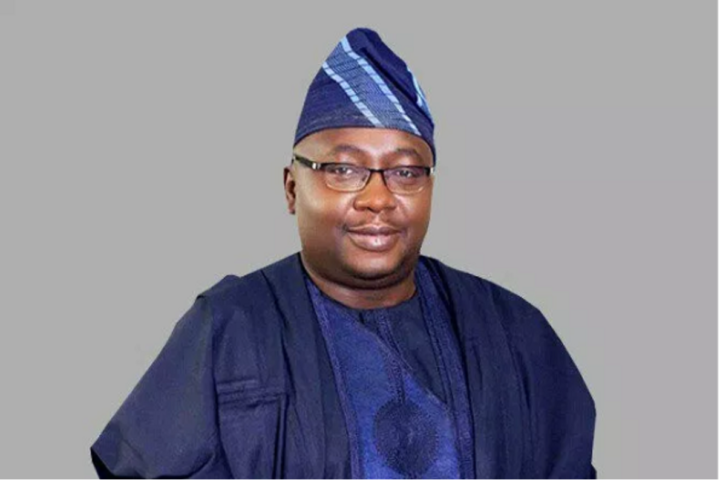Nigeria’s Minister of Power, Adebayo Adelabu, has revealed that over 10,000 megawatts (MW) of electricity capacity remains trapped in idle power plants across the country due to transmission bottlenecks, gas supply shortages, and inadequate distribution infrastructure. The minister described the situation as a major setback to Nigeria’s quest for stable and sustainable electricity supply.
Speaking during an energy sector stakeholders’ meeting in Abuja, Adelabu explained that while Nigeria’s installed generation capacity stands at over 13,000MW, the national grid currently transmits only between 4,000MW and 5,000MW on average. He said that poor coordination among key players in the power value chain — including generation, transmission, and distribution companies — has contributed to the chronic underutilization of existing power assets.

“It is unfortunate that more than 10,000 megawatts of available capacity are sitting idle across the country. These are investments already made by the government and the private sector, yet we are unable to deliver the full benefit to Nigerians due to systemic challenges,” Adelabu said.
The minister identified critical constraints such as insufficient gas supply to thermal plants, outdated transmission lines, weak distribution networks, and frequent grid collapses as the key factors hindering power evacuation. He emphasized that unless these bottlenecks are addressed, the nation will continue to suffer from erratic electricity despite huge investments in generation assets.
Adelabu disclosed that the government is working on an aggressive recovery plan aimed at unlocking the stranded capacity through infrastructure upgrades, improved gas supply coordination, and private sector participation. “We are not just focused on adding new capacity but on ensuring that what we have is efficiently utilized. Our goal is to unlock the trapped megawatts so that Nigerians can enjoy reliable and affordable power,” he said.
According to the minister, several independent power plants (IPPs) and National Integrated Power Projects (NIPPs) are operating below capacity or have been shut down due to the inability to evacuate generated power. He said the government is collaborating with the Transmission Company of Nigeria (TCN) and the Nigerian Electricity Regulatory Commission (NERC) to identify and prioritize critical transmission projects that will expand grid capacity.
Adelabu added that the Federal Government is also in discussions with the Nigerian National Petroleum Company Limited (NNPCL) and gas suppliers to ensure consistent fuel supply to power plants, especially in the Niger Delta and South-West regions where gas constraints have been most severe.
“The gas-to-power challenge remains one of our biggest obstacles. We are implementing measures to improve gas infrastructure and secure supply agreements that will guarantee steady fuel for power plants,” he said.
The minister also hinted that some of the idle plants could be concessioned to capable private investors under a transparent Public-Private Partnership (PPP) model, allowing for more efficient management and operation. He said this approach would relieve the government of the financial burden of maintaining non-operational facilities while boosting generation output.
Energy experts at the meeting expressed concern over the situation, noting that Nigeria’s persistent power shortfall continues to undermine industrial productivity and economic growth. They argued that unlocking the 10,000MW stranded capacity could immediately improve electricity access for millions of homes and businesses nationwide.
A former power sector executive, Dr. Sam Amadi, said, “What Nigeria needs now is a coordinated policy response that addresses generation, transmission, and distribution simultaneously. There is no reason why we should have power plants lying idle while the country is in darkness.”
Adelabu reassured Nigerians that the government’s Power Sector Recovery Programme (PSRP) would be reinvigorated to tackle the structural issues within the sector. He noted that plans are underway to modernize the national grid, introduce regional grids, and encourage the development of embedded generation systems to reduce dependence on the central grid.
“We are adopting a decentralised approach that will enable states and private investors to establish independent power systems tailored to their local needs. This will ease the pressure on the national grid and enhance supply reliability,” the minister stated.
He emphasized that the Federal Government remains committed to achieving its target of 20,000MW of available generation and 10,000MW of actual supply within the next few years. Adelabu also assured that regulatory reforms would soon be implemented to attract new investments and restore confidence in the power sector.
Despite decades of reforms and investments, Nigeria’s power generation has remained largely stagnant, with frequent blackouts and high energy costs frustrating households and industries. However, stakeholders hope that the government’s renewed focus on unlocking idle capacity will mark a turning point for the sector.
Adelabu concluded by reaffirming that resolving the challenges facing the power sector is central to Nigeria’s economic recovery plan. “We are determined to change the narrative. Unlocking the 10,000MW trapped capacity is not just a technical goal; it is an economic necessity for national development,” he said.
With the new reforms and collaborative strategies being rolled out, the Ministry of Power believes that Nigeria is on the path toward finally harnessing its full generation potential to achieve sustainable energy access for all.
Support InfoStride News' Credible Journalism: Only credible journalism can guarantee a fair, accountable and transparent society, including democracy and government. It involves a lot of efforts and money. We need your support. Click here to Donate
